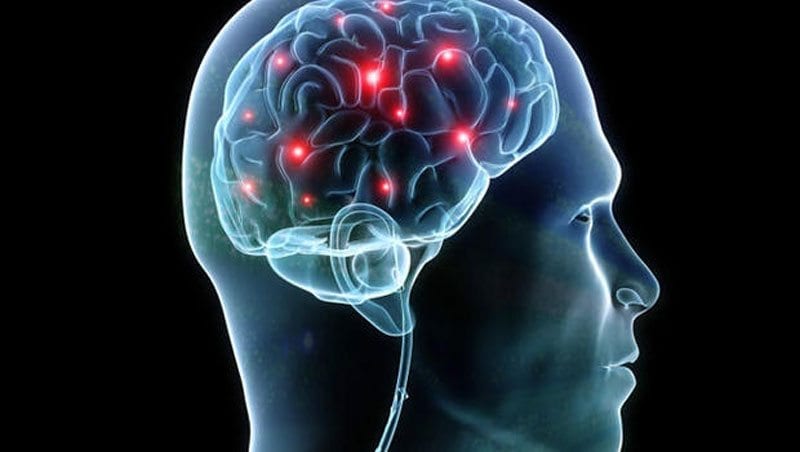By Jeff Vircoe
When, as children, we are told not to put our hand on the hot stove, it’s kind of a no-brainer. Yeah, I think I can figure that out, mom.
And when we come to the rooms of recovery, beat up, lost, and feeling like old little kids in an adult world, the term Live and Live can have a similar connotation.
Intuitively it makes sense… but how the heck does one do that?
Live and Let Live is one of the big three slogans of Alcoholics Anonymous, in that it is one of the trio of helpful suggestions written at the bottom of page 135 in the 12 Step movement’s basic text, the Big Book, alongside First Things First and Easy Does It. Sage advice for anyone, not just for people with addiction—Live and Let Live has plenty of therapeutic value. In the treatment world, where people suffering from addiction are clamoring for a way out of their pain, the slogan speaks to modalities employed by counselors.
“For me, therapeutically, Live and Let Live is being in the moment. Being right now,” says Ryan Tompkins, 50, an addictions counselor at Edgewood Treatment Centre in Nanaimo, B.C. “If I’m working with patients who are living in the past, or they’re living in the future, that’s all they’re focused on. They can’t live in the now. So they can’t process what they need to do now, to just live and let live and move on.”
For the past three and a half years, the retired naval chief petty officer has been helping Edgewood patients learn to deal with their clear and present danger—addiction.
“Addicts get so caught up in the past or the future. Addiction lives in the past or the future. If we help the patients live in the now, in this moment, addiction can’t live here, with their people, with their peers, with what’s happening to them in that moment, whether they’re breathing – or not breathing half the time,” he says with a smile.
Tompkins says a lot of the work he does with patients is utilizing various grounding techniques.
“Breathing in the moment. Living. Right in this moment. Focus on, ‘How am I living in this moment? What’s happening in me? What’s happening to me right now?’ These [are] reflective questions that I get patients to ask themselves. How do we help you be in the room with us right now and not be caught in the past? So, the breathing, the grounding, we do a lot of schematic stuff, ‘What’s happening in your body right now?’, so they can begin to recognize this is what I’m feeling like in this moment right now, process it, and then they get to move on to the next minute. Versus living in their past and holding onto a resentment, or moving towards the future and how they’re going to figure everything out. So, that mindfulness piece of being in this moment right now. The here and now.”
Psychologists and scientists seem to agree with the philosophy of Live and Let Live. The practices of Mindfulness – defined as the psychology of bringing a person’s attention to external and internal experiences happening in the present moment, embody the concepts proposed in the slogan. It’s not just a good idea. The scientists have proven it works.
Pointing to a series of neuroimaging studies exploring the neural mechanisms underlying mindfulness meditation practices, scientists are finding that “experienced meditators exhibit a different gray matter morphometry in multiple brain regions when compared with non-meditating individuals,” according to six different studies done between 2005-2010.
In other words, “We can train our brains to automatically reconnect to what matters, break free from the limiting stories in our minds, incline our minds toward the good in life and even learn how to relate to our difficult feelings differently to realize an emotional freedom from the confines of our habitual thoughts and reactions,” says Dr. Elisha Goldstein, a Los Angeles-based psychologist, in a Huffington Post blog in 2013.
Though the contemporary version of Live and Let Live may have originated on the battlefields of World War One, when opposing armies were recorded standing down and interacting in a non-violent way at Christmas and other important holidays, the truth is, since ancient times, getting grounded, choosing acceptance and seeking coherence with the world – right now – has always made sense. Early Eastern religions like Hinduism and Buddhism used meditation as far back as 4,000 years ago. The practice remains a critical component of their beliefs. In today’s fast paced world, the versatility of mindfulness practices means virtually anyone can find a form of the practice to fit their schedule, and the benefits are undeniable, whether you have an addiction or not.
“That therapeutic bond that happens in the here and now? Addiction can’t live there. Addiction can live in the past or the future,” says Tomkins.
Indeed, with many individuals with addictions refer to themselves as control freaks. Acceptance, a radical departure for most people struggling with addiction, is a big part of finding the peace to calm down a busy brain.
Marsha M. Linehan, an American psychologist credited with creating dialectical behavior therapy, once put it this way:
“Radical acceptance rests on letting go of the illusion of control and a willingness to notice and accept things as they are right now, without judging.”
She’s also quoted saying acceptance is the only way out of hell, a place with which too many people with addiction can identify.
Live and Let Live as a concept doesn’t appear in A.A. literature in the Big Book only. One of the books patients study at Edgewood is called Living Sober, an 88 page book detailing some of the methods A.A. members have used to not drink. This handy resource dedicates an entire chapter to the slogan, two and a half pages of wise advice to ponder.
“To begin to put the concept of Live and Let Live into practice, we must face this fact: There are people in A.A., and everywhere else, who sometimes say things we disagree with, or do things we don’t like. Learning how to live with differences is essential to our comfort. It is exactly in those cases that we have found it extremely helpful to say to ourselves, “Oh, well, ‘Live and Let Live.’”
“In fact, in A.A. much emphasis is placed on learning how to tolerate other people’s behavior. However offensive or distasteful it may seem to us, it is certainly not worth drinking about. Our own recovery is too important. Alcoholism can and does kill, we recall.”
In other words, how important is this resentment we are building up rather than accepting them for who they are.
Nicole Makin is a clinical counselor at the Edgewood Health Network’s clinic in Victoria, B.C. With over a decade of helping people who suffer from addictions and other mental health issues find peace, she says Live and Let Live is an important bit of advice to get our heads around.
“It’s complicated. I think of addiction as isolation and the opposite of that is connection. So when we are living in an interconnected way, we have to have a balance of allowing others to make their choices, and also having boundaries around what we are willing to experience,” she says.
“For me, Live and Let Live would come into play if I was struggling with someone else’s behavior. It’s a reminder that I have a responsibility to set healthy boundaries for myself and allow others to have their own choices,” she says.
In closing, whether you have an addiction or not, Live and Let Live is a bite-sized jingle packing a powerful psychological and scientifically-backed punch. As one anonymous writer put it in the book Stress Less: The Essential Guide to Reducing Stress With Meditation and Mindfulness, it’s just something we need to think about.
“When we are stressed, it effectively makes us less intelligent. This is due to the reduction in prefrontal activity, which in turn is designed to make us more focused and alert. Essentially, the prefrontal cortex is the part of the brain responsible for forward planning, creative thinking and other ‘high-order’ brain activity.
“When you are being chased by a lion, though, it is really not the time to be thinking about the meaning of life! So, shutting down this part of the brain and placing your focus on feedback from your senses makes much more sense.”



